How Many Animals Are In The Amazon Rainforest
Amazon Rainforest animals fix the fashion curve for Southward America. Some blend in with their surroundings, while others show off a wildly eclectic palate of bright colors, spots, and patterns. The largest rainforest in the world, the Amazon boasts incredible biodiversity unlike anywhere else.
Folks from around the world travel to the Amazon with their long lens cameras and binoculars to run across these unique critters. Beneath, we shine the spotlight on 30 of the most glorious residents of the Amazon jungle !
Tabular array of Contents
- Mammals
- Birds
- Reptiles and Amphibians
- Insects
Concluding updated by Melissa Dreffs in August 2020.
Amazon Rainforest Mammals
Some of the most incredible animals of the Amazon are felines, monkeys, and river critters. Just that's not all! The Amazon Rainforest is abode to many incredible mammals: at least 430 different species!
1. Jaguar
Chetah spots are to the plains of Africa as jaguar spots are to the jungle of South America. Many travelers count their lucky stars in eager anticipation of seeing this classic jungle icon. Y'all will need to travel pretty deep into the jungle for a good chance at seeing a jaguar. The just lodge in the Tambopata Reserve in the Peruvian Amazon , the Tambopata Research Eye boasts a 35% hazard of seeing a jaguar in their natural habitat.
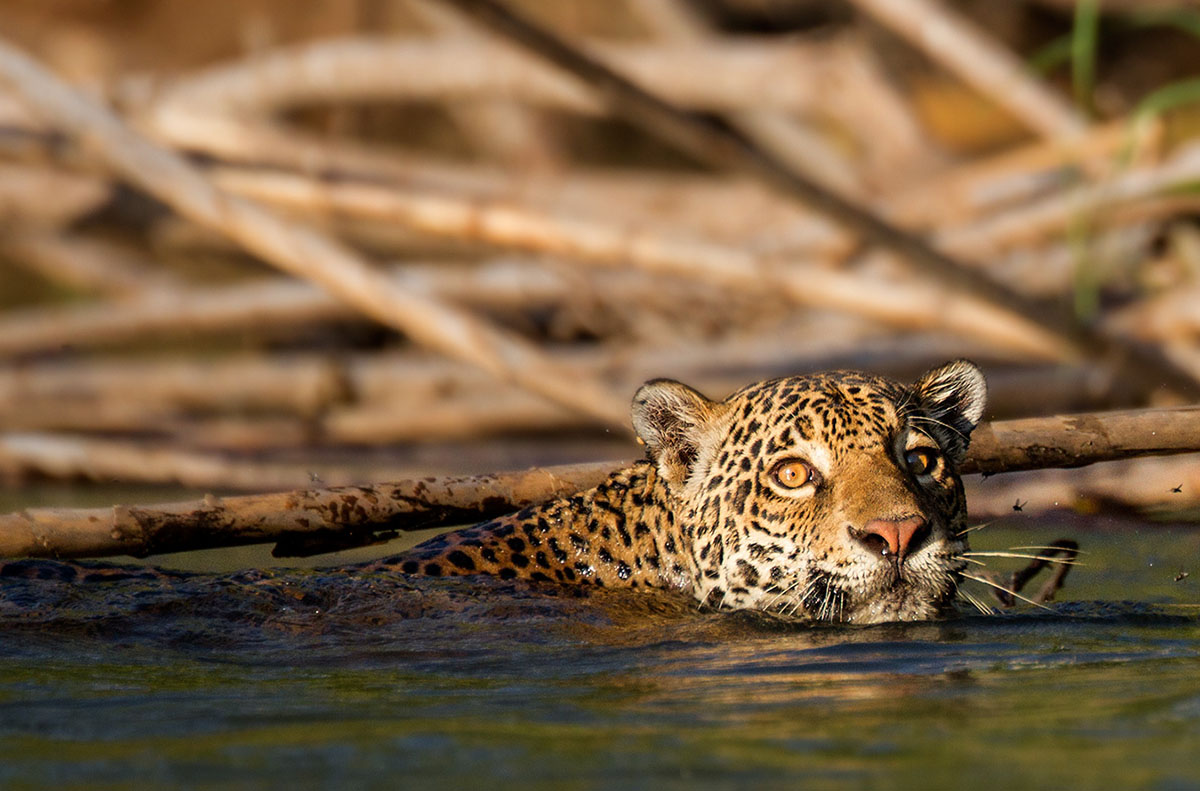
Jaguar. Photo by Lucas Bustamante for Rainforest Expeditions.
ii. Giant River Otter
The behemothic river otters found in the Amazon are the largest otters in the globe. With some reaching up to 5.6 feet (1.7 meters), these otters swim through the Amazonian rivers and lakes using their stiff tails and webbed feet. Giant river otters are very vocal, with at least 22 singled-out sounds in their vocabulary.
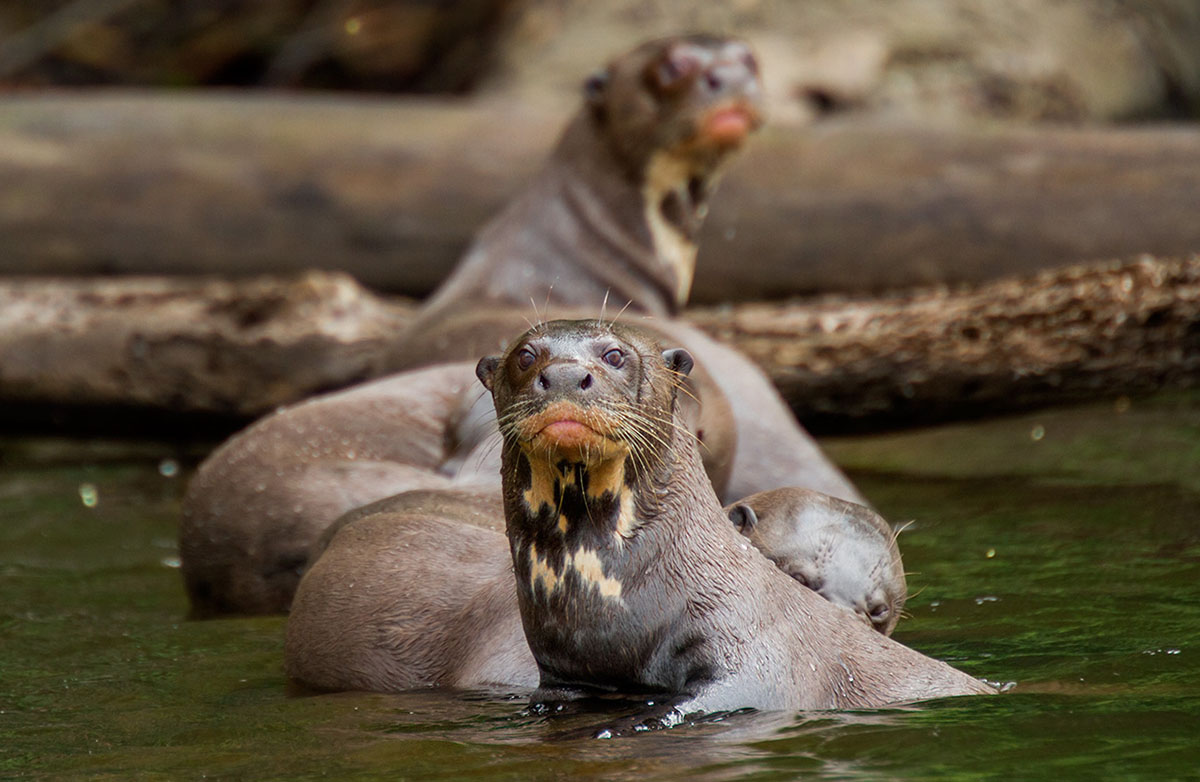
Giant river otters. Photo past Lucas Bustamante for Rainforest Expeditions.
iii. Red Howler Monkey
The red howler monkeys tin be heard by virtually travelers visiting the Peruvian jungle. Their loud roars tin can be heard up to 3 miles (v kilometers) away. In that location'due south most a 50% risk to see these monkeys at our top Puerto Maldonado jungle lodges , with a greater risk the deeper you get into the jungle. Keep your eyes on the awning!
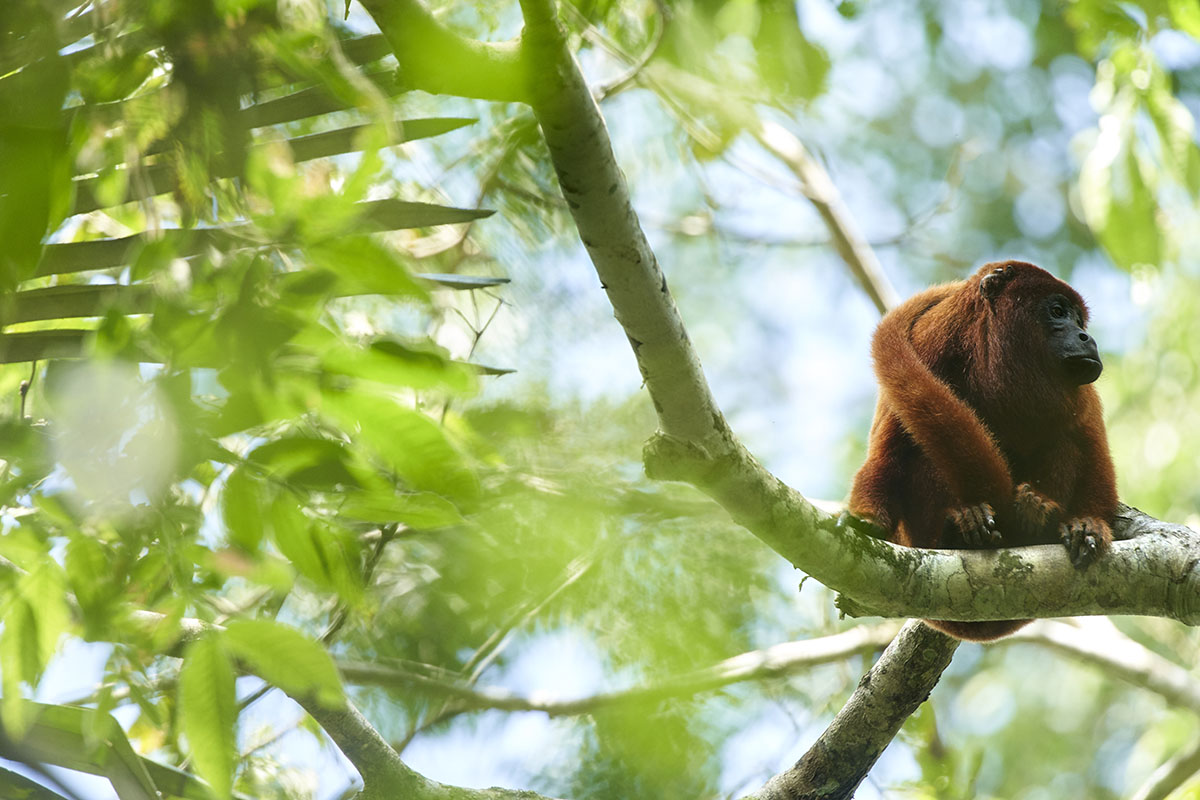
Reddish howler monkey. Photograph past Paul Bertner for Rainforest Expeditions.
iv. Capybara
A rather docile rodent, capybaras look like giant republic of guinea pigs. They live in the densely forested areas of South America well-nigh bodies of freshwater. Capybaras are surprisingly great swimmers and can hold their breath for up to 5 minutes underwater. These jungle animals are actually the largest rodent in the world today, about four feet (1.2 meters) long and 2 anxiety (sixty centimeters) alpine.
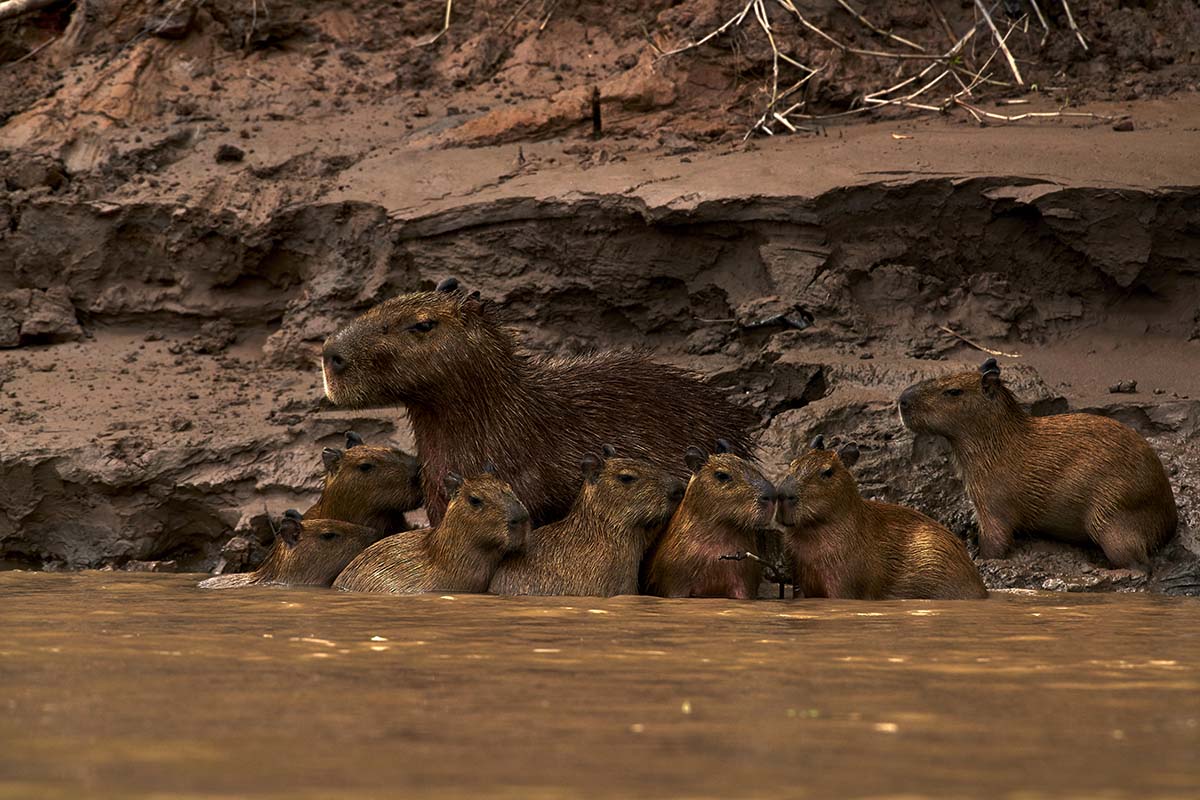
Capybaras. Photo by Paul Bertner for Rainforest Expeditions.
5. Black-capped Squirrel Monkey
The black-capped squirrel monkey is found in the Peruvian, Brazilian, and Bolivian Amazon. They live in female-dominated groups with near 40 to 75 monkeys. Unlike many other monkeys that use their tail to climb, these squirrel monkeys typically use their tail for balance.

A black-capped squirrel monkey. Photo by Rainforest Expeditions.
six. Sloth
Sloths are known as perezosos locally, pregnant "lazy" in Castilian. Both the two-toed and 3-toed sloths live in the Amazon. If yous are actually lucky, there is a small chance of seeing them in the wild during excursions at our favorite Puerto Maldonado jungle lodges .

Three-toed sloth.
7. Collared Anteater
While several anteater species call the Americas habitation, the collared anteater is unique to S America. Much smaller than the giant anteaters, they are able to climb trees in search of ants, termites, or other food. With tongues near 15 inches (40 centimeters) long, these anteaters tin catch insects easily.
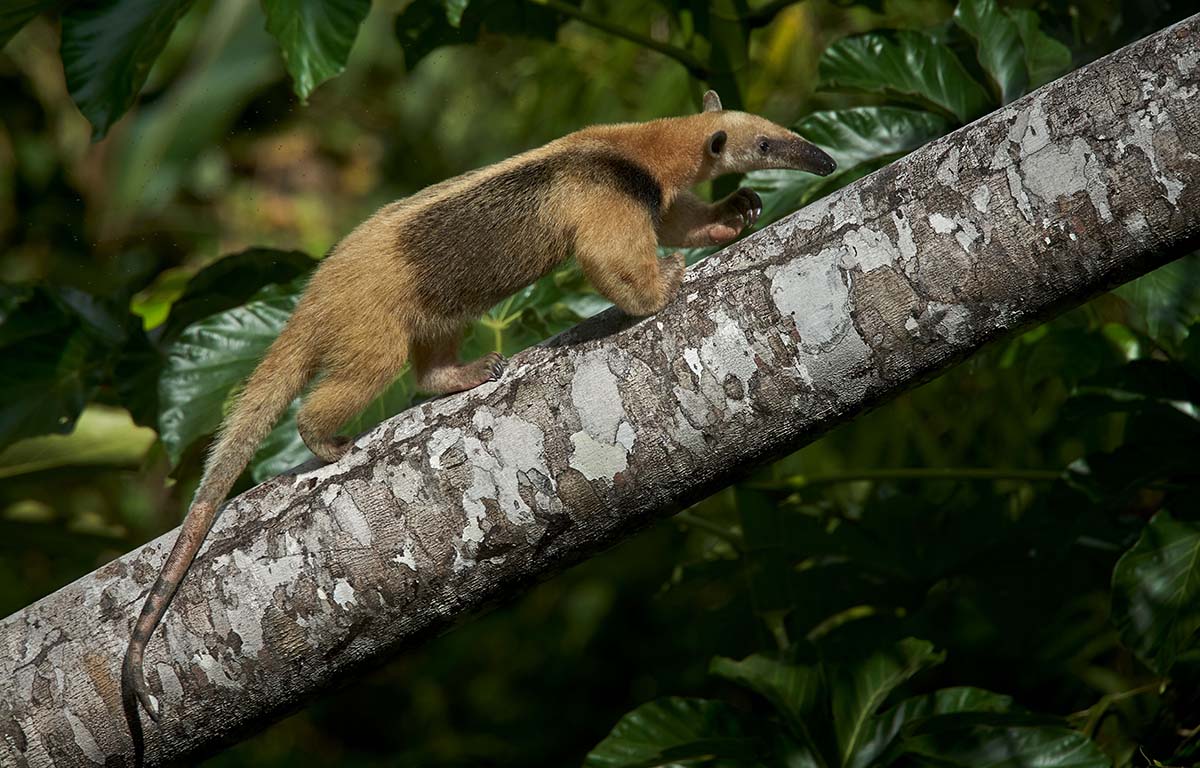
Collared anteater. Photo by Paul Bertner for Rainforest Expeditions.
8. Pink River Dolphin
Pink river dolphins alive in the Amazon River and its tributaries. While the babies are dark gray, the developed dolphins appear a calorie-free shade of pinkish. Native tribes around the Amazon have several legends dedicated to the pinkish dolphins. One of the about well known says the dolphins turn into handsome young men at night, heading to the shores to seduce young women. To see these incredible dolphins for yourself, consider a stay at an Iquitos jungle gild or taking a luxury river cruise .
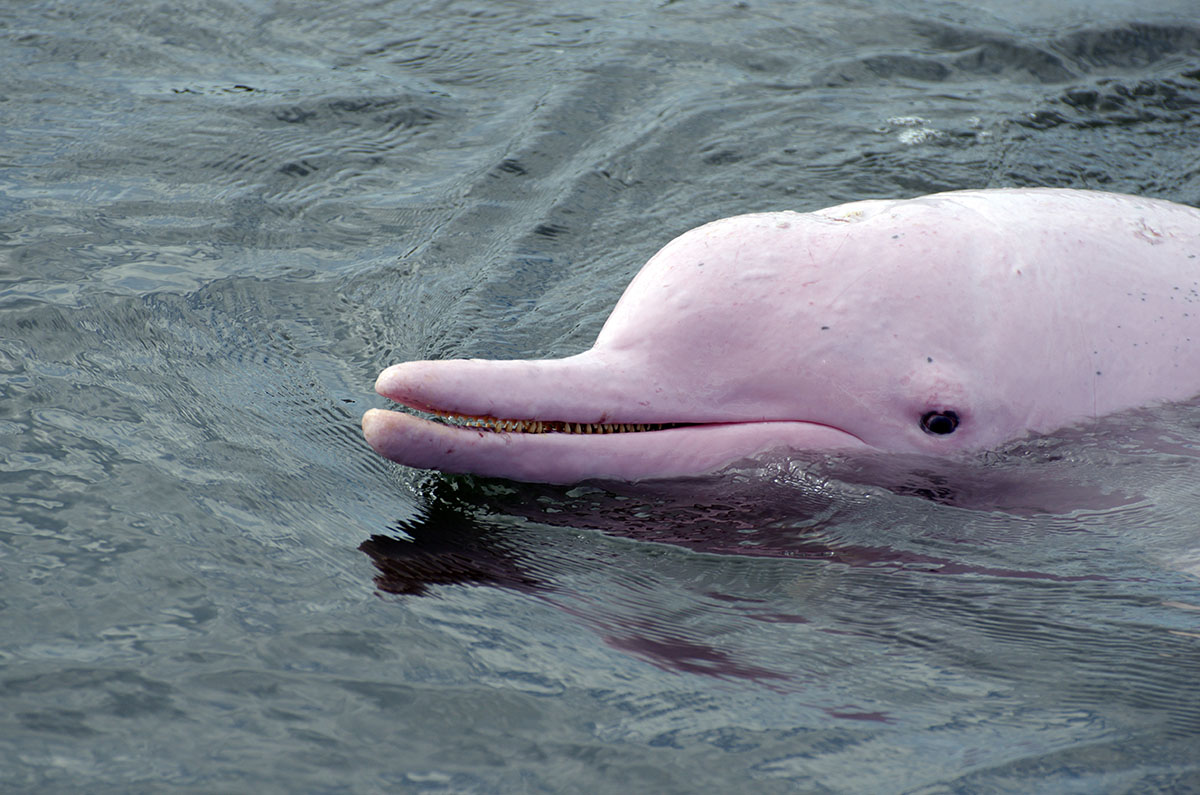
A pink river dolphin.
9. Puma
Behold a true jungle fable, the puma. With its sleek build and carnivorous means, "fierce" is an appropriate adjective to narrate these rainforest cats. Consider yourself very, very lucky if you run into a puma in the wild. The owner of Rainforest Expeditions hasn't seen one in more 20 years working in the Amazon!
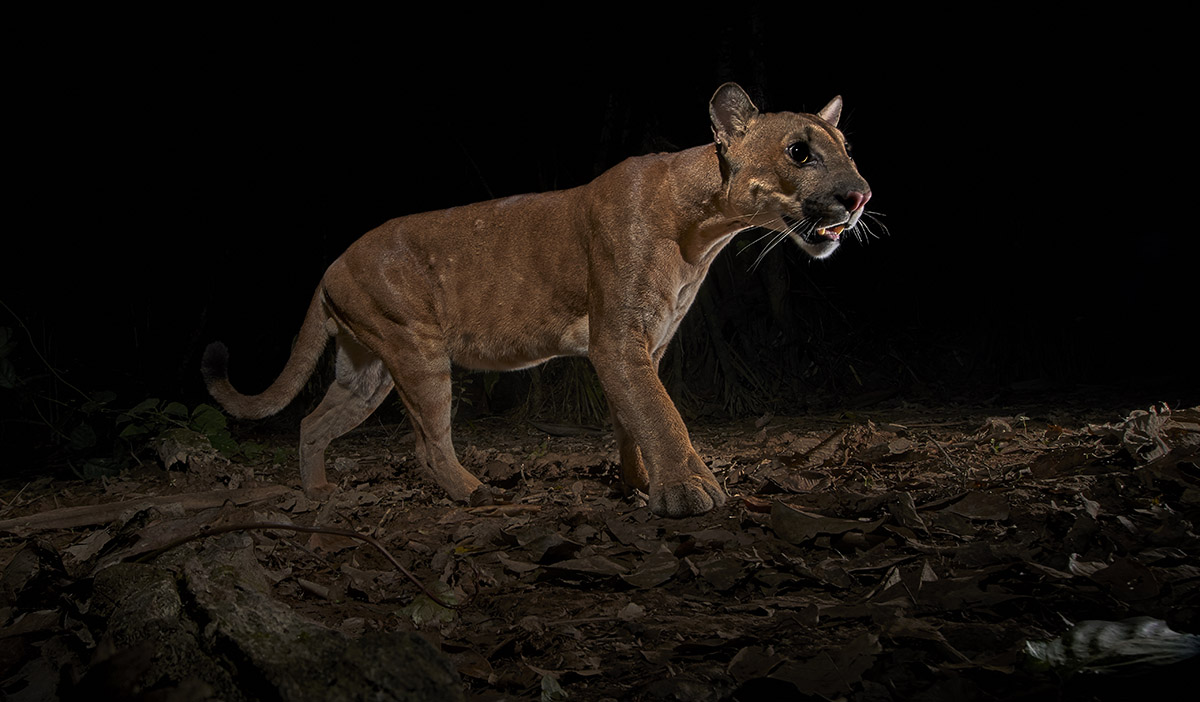
A puma. Photograph past Paul Bertner for Rainforest Expeditions.
ten. Bearded Emperor Tamarin
The bearded emperor tamarin gives new pregnant to the phrase "monkeying around". With their distinct white mustache and beard, this primate lives with a minor, extended family of between 4 and fifteen members. Bearded emperor tamarins see the world in only two colors, helping discover predators, even the ones with the best camouflage. Some females run across a third color, which helps to detect the ripest fruits.
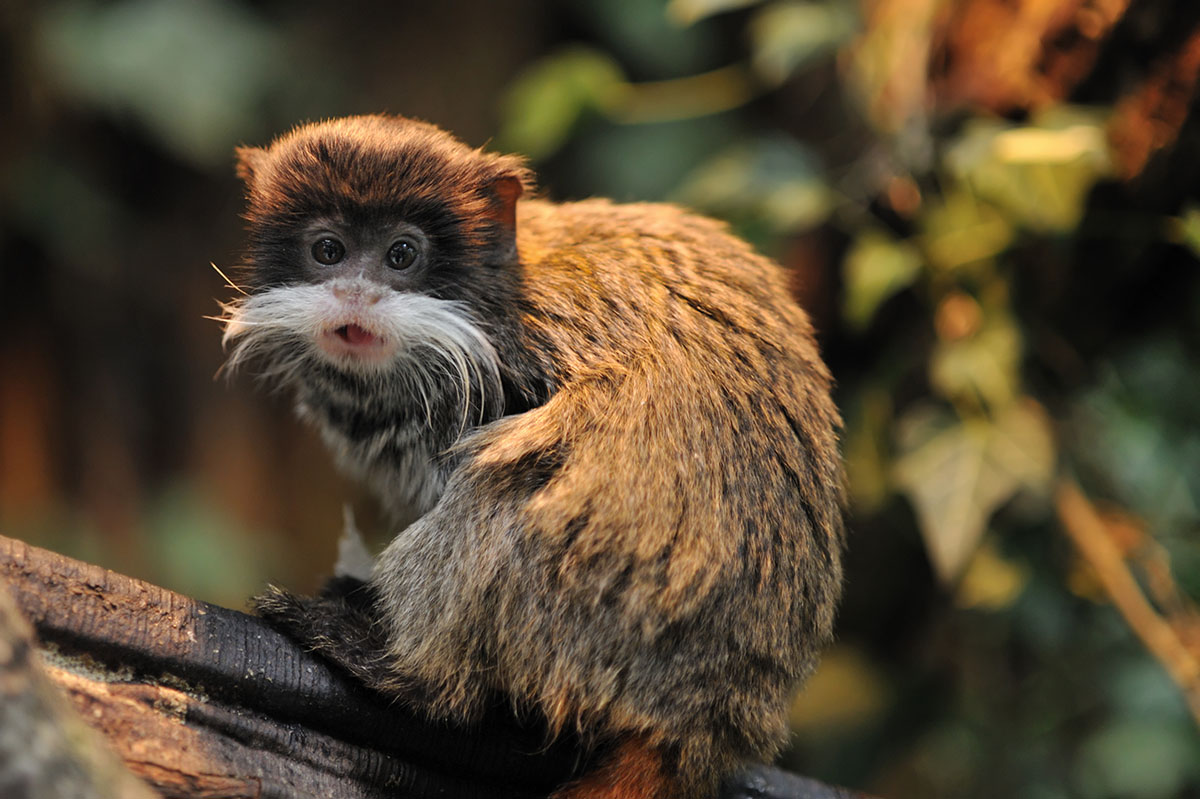
Bearded emperor tamarin.
11. Amazonian Tapir
At first glance, you may think tapirs are some sort of wild sus scrofa or somehow related to anteaters. In reality, tapirs are most closely related to horses and rhinoceros! Babe Amazonian tapirs are born with white stripes and spots that fade over time. They are bang-up swimmers and oft run into the rivers to escape their predators.
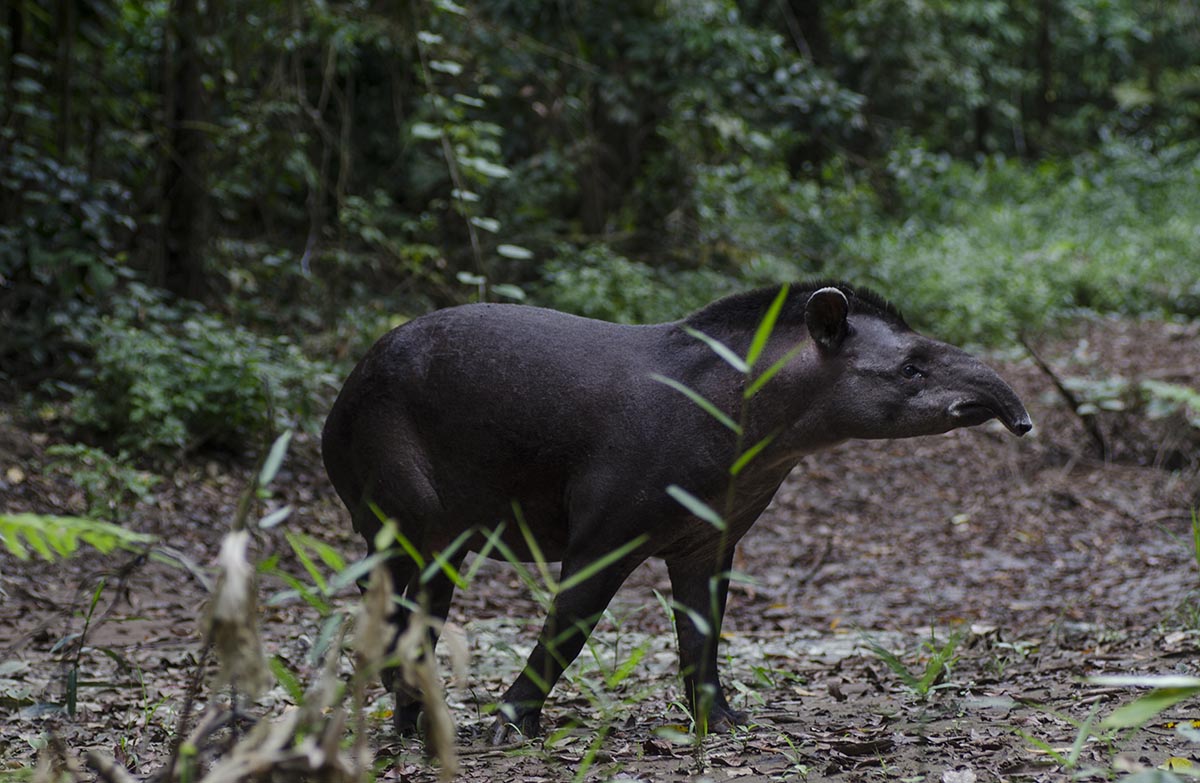
Amazonian tapir. Photo by Louis Guillot for Rainforest Expeditions.
Amazon Rainforest Birds
These seven unique species are just a pocket-size per centum of the ane,300 bird species found in the Amazon (which is why information technology is the perfect place for birdwatching). Feathers are all the rage whether blending in or standing out for these Amazon Rainforest animals.
12. Macaw
Macaw feathers come in merely about any color, with red, yellow, green, and blue being the nearly common. The ruddy macaw is the most well-known, with its distinct carmine, yellow, and blue feathers. Information technology is mutual for macaws to get together at clay licks in search of salt. This allows many visitors to Puerto Maldonado the chance to see these royal birds in the wild.
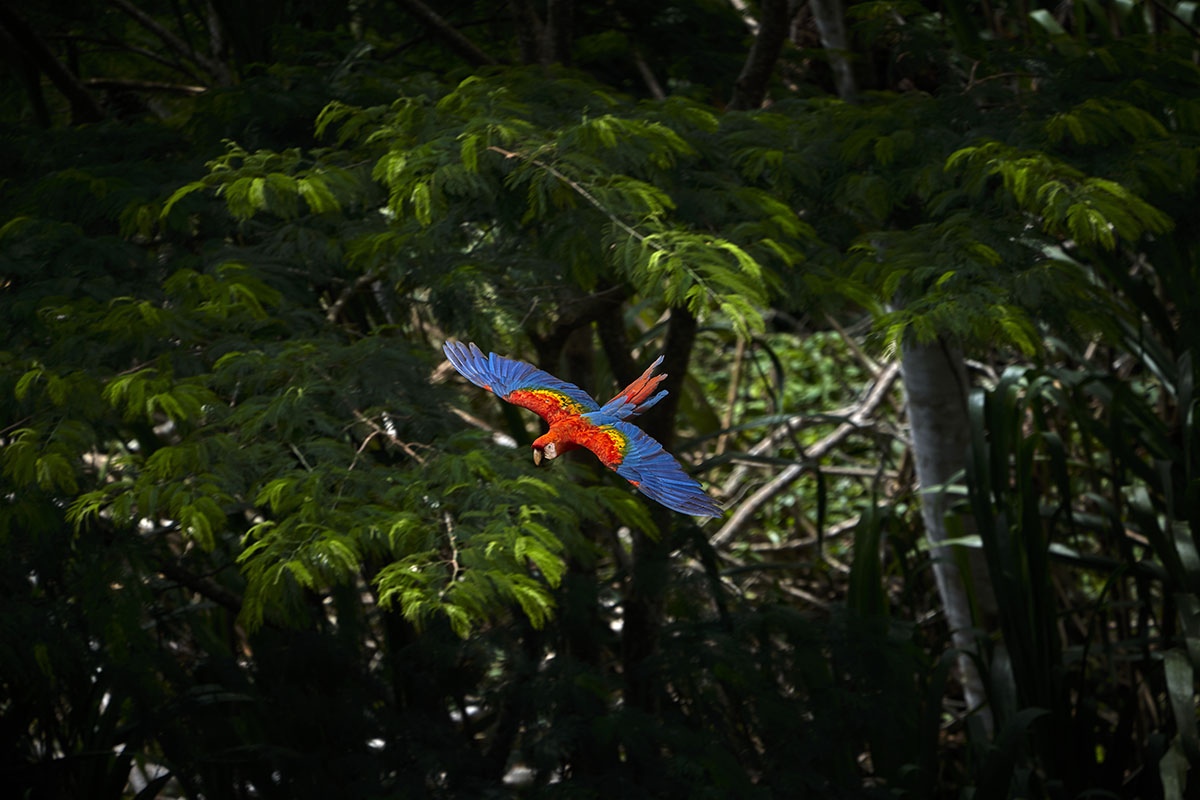
A scarlet macaw. Photo by Paul Bertner for Rainforest Expeditions.
13. Harpy Eagle
The intense eyes and precipitous bill are cardinal features of the harpy eagle. A top predator in the jungle, the harpy eagle soaring through the Amazonian heaven is a astounding sight. Harpy eagles have a gray head, white belly, and an intricate pattern of white, grayness and blackness feathers on their wings.
14. Spangled Cotinga
Male spangled cotinga birds are characterized past vibrant turquoise feathers covering their body with a patch of dark pinkish feathers on their throat. This Amazon Rainforest beast lives loftier in the canopy and, unlike the other birds on this list, does not accept the ability to make sounds.
15. Royal Flycatcher
While the body of this bird is rather plain, it has an extremely cute crest it displays when threatened or trying to attract a mate. The bright feathers of its crest range from yellow to red and accept purplish-blue tips and spots.
16. Potoo Bird
Potoo birds offering a new take on cover-up. These jungle birds alloy in brilliantly as an extension of the bawl or every bit a broken off stump. As nocturnal jungle dwellers, they are agile at dark. Likewise, they requite eerie vocalizations that acquit long distances to alert others of their presence.
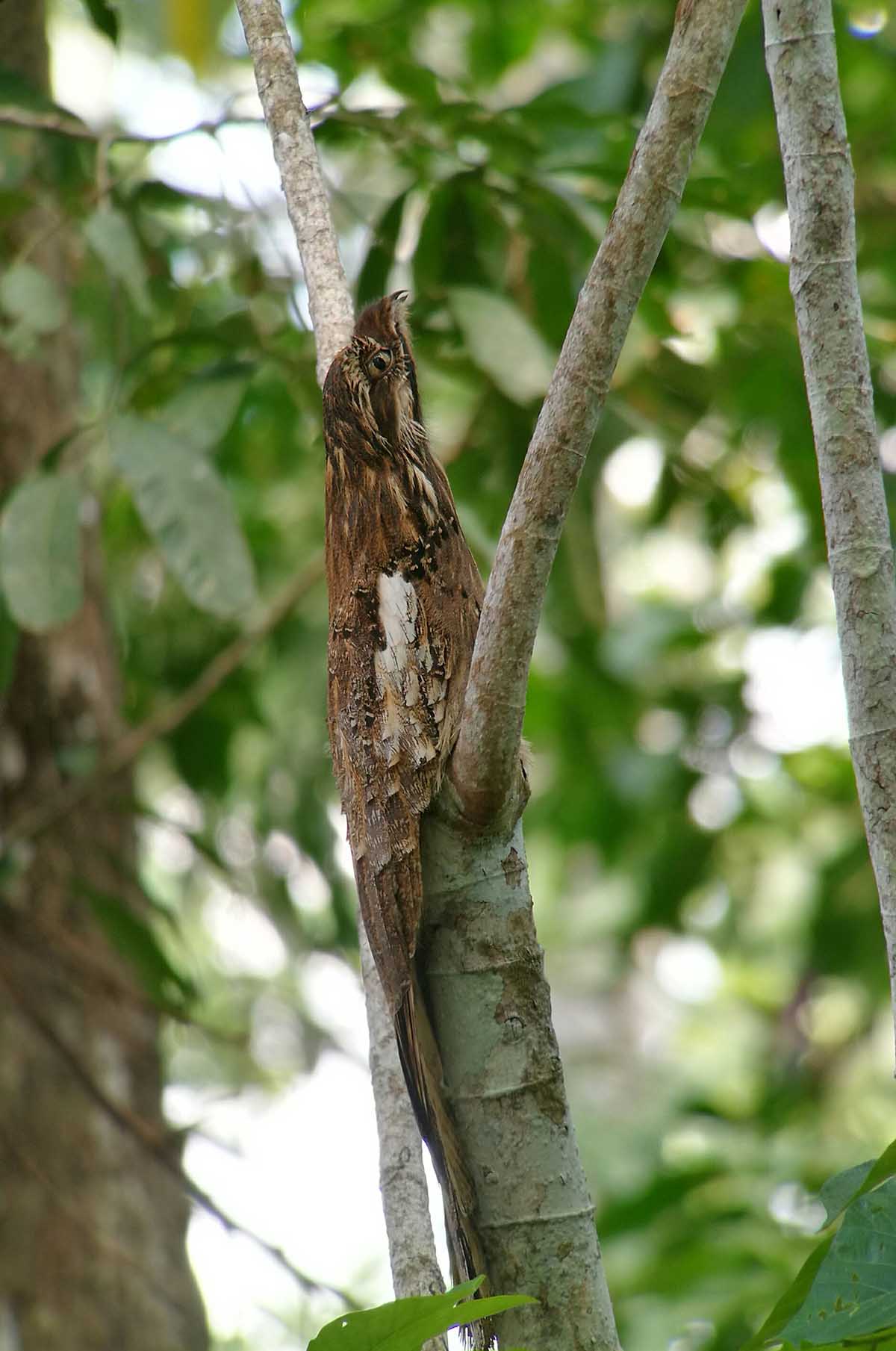
Potoo bird. Photo by Fernando Ccoa for Rainforest Expeditions.
17. Toucan
The large, oftentimes colorful beaks are the almost distinctive features of toucans. The Tambopata region in Republic of peru is home to many toucan species, including the xanthous-ridged toucan and green-feathered emerald toucanet.

A yellow-ridged toucan. Photo by Carlos Peña for GreenHouse Tambopata.
eighteen. Paradise Tanager
This multicolored songbird is a mutual bird to spot in the Amazon. With bright greenish heads and sky blue underbellies, they by and large stand out from their surroundings. This bird nests high in the canopy, far from predators that might go after their eggs.
Amazon Rainforest Reptiles and Amphibians
More than 400 amphibian species and over 375 reptile species call the Amazon home. Below are a few of the most famous, of import, and unique Amazon Rainforest reptiles and amphibians.
nineteen. Poison Dart Frog
Some of the almost colorful amphibians in the jungle are poison dart frogs. These pocket-size, poisonous jungle creatures typically have intricate patterns on their brightly colored bodies. Ranging from hues of red, blue, yellow, and everything in between, their vivid colors are a key defense machinery to ward off predators.
20. Side-Necked Turtle
Photoshop was not used to superimpose the swarm of butterflies in this photo. Different species of collywobbles actually potable from the side-necked turtle's tears, a natural occurrence in the Amazon . Many found eaters in the Amazon practice not get enough salt from their diet. They have come upward with artistic solutions, like drinking turtle tears, to increment their salt intake.
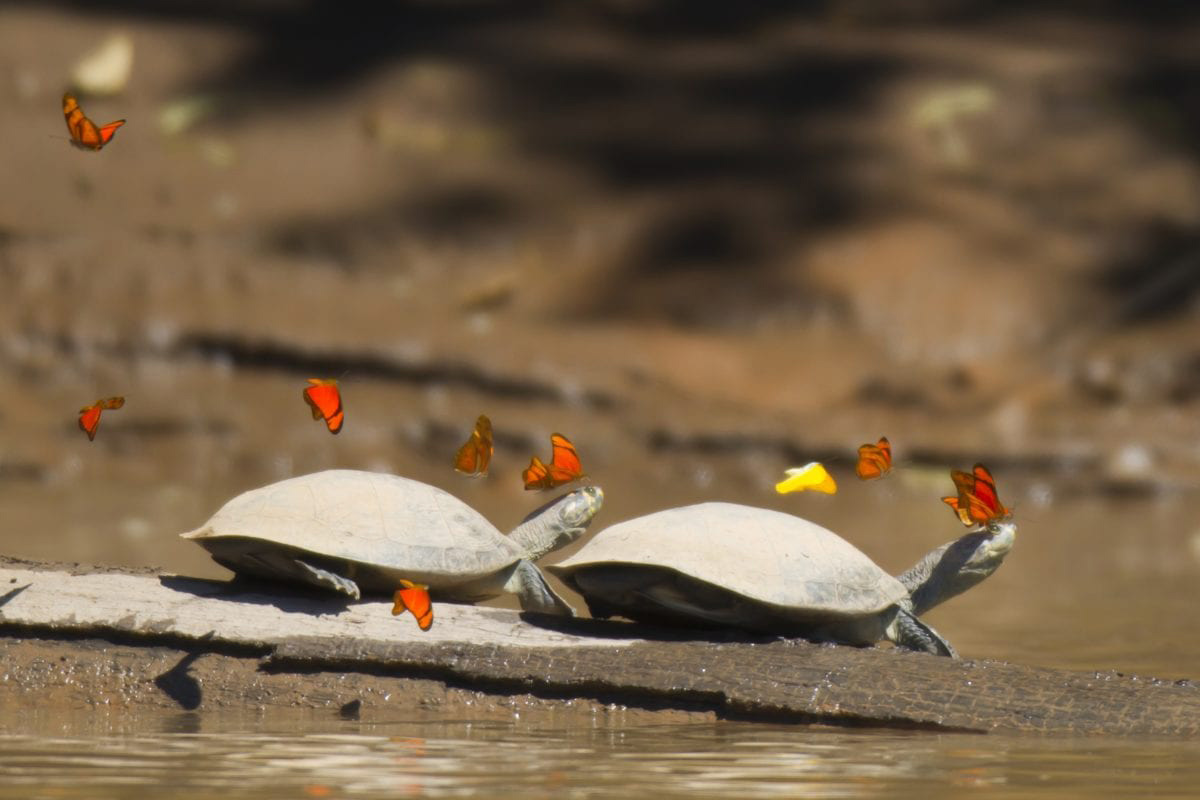
Side-necked turtle and collywobbles. Photo by Marcelo Bonino & Jeff Cremer for Rainforest Expeditions.
21. Blackness Caiman
The largest predator of the Amazon ecosystem is the black caiman. Like its proper noun suggests, this reptile has dark scales which helps to alloy in with their surroundings. Most of the time, you are only able to see the eyes lurking to a higher place the water.
Scientists have discovered fossils of an extinct, behemothic caiman in the black caiman's territory reaching upwards of 40 feet (12 meters). Yet, this crocodilian but grows to about 15 feet (4.5 meters) in length, most as big as its relative: the American alligator.
22. Bicolored Tree Frog
The eyes on this frog are certainly its most notable characteristic. These behemothic leaf frogs are ordinarily found across the Amazon. These frogs have bright greenish backsides with a foam colored abdomen. The frogs spend most of their time in trees rather than the forest floor. They swing between trees similar monkeys, giving them an alternate proper name: behemothic monkey frog .
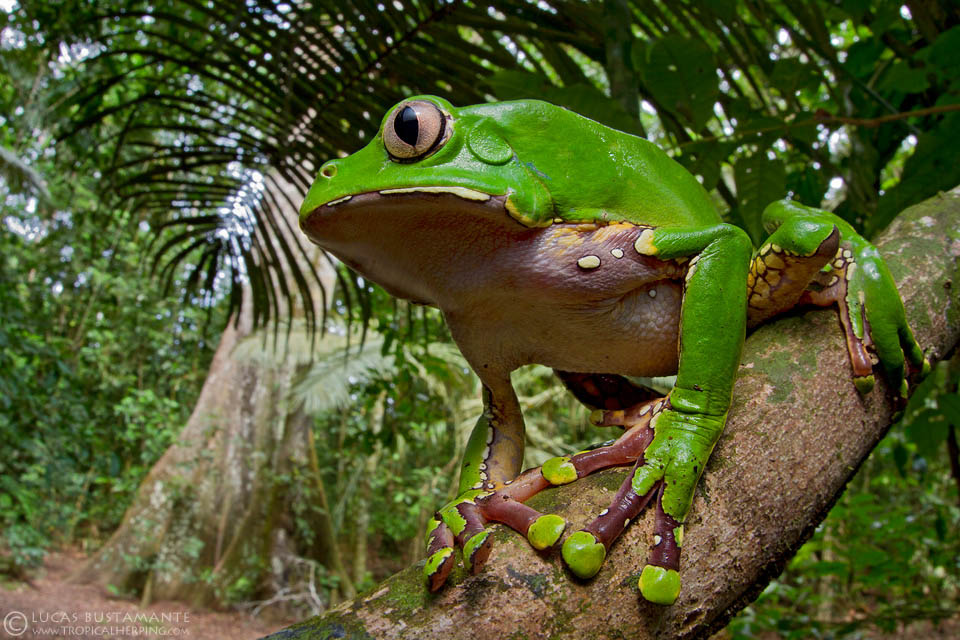
Bicolored tree frog. Photo by Lucas Bustamante for Rainforest Expeditions.
23. Green Anaconda
The green anacondas are the heaviest and second longest snakes in the world. These water boas are rather clumsy on the land, but more sly in the swamps, marshes, and streams they hunt in. With their optics and olfactory organ on top of their heads, they tin hide most of their torso underwater while keeping a await out for food.
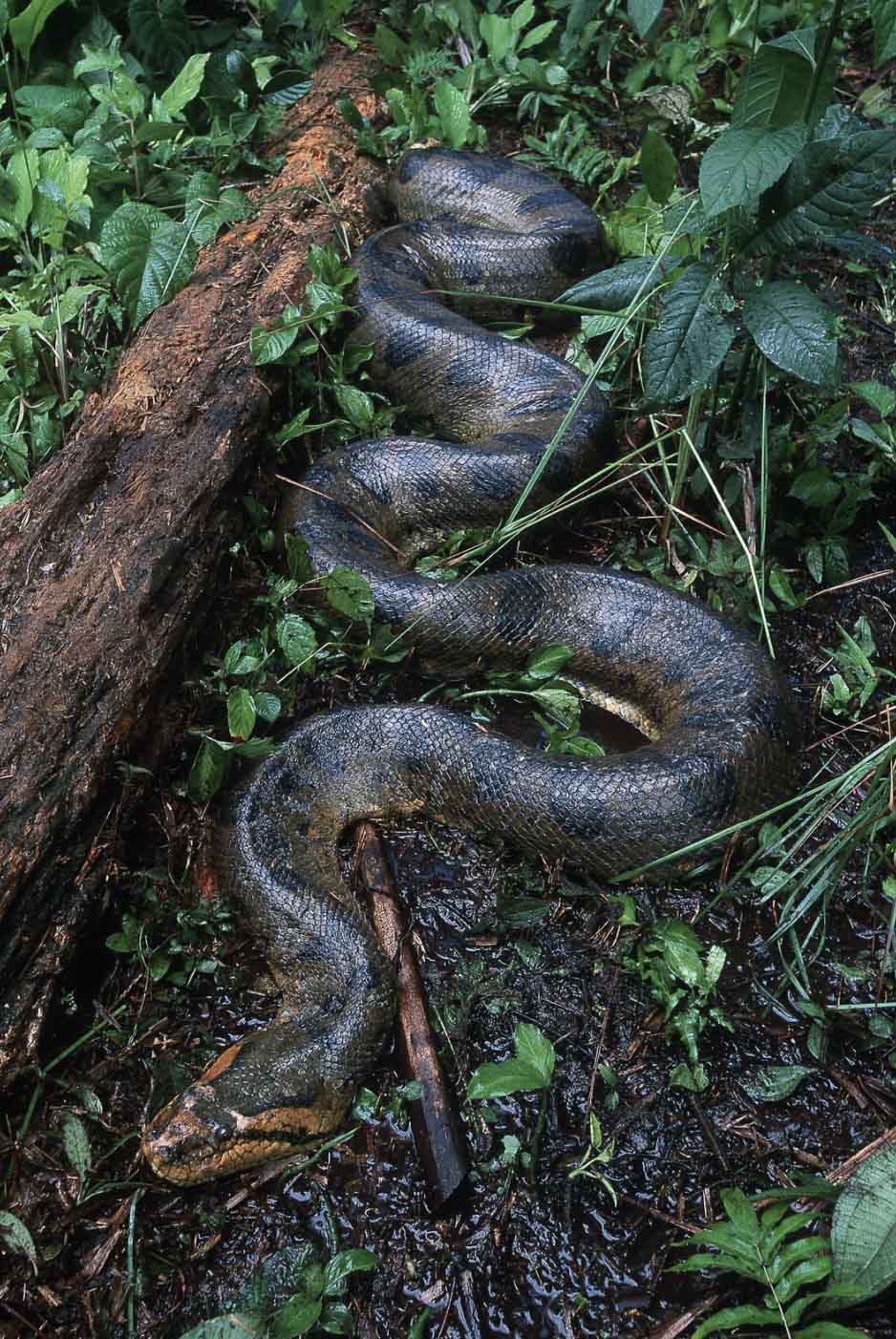
Green anaconda. Photo past Rainforest Expeditions.
Amazon Rainforest Insects
The Amazon Rainforest is home to an incredible diverseness of insects. Over 90% of all Amazon Rainforest animals are insects! Researchers and scientists discover thousands of new insect species every year. Because of this, it is hard to know exactly how many insects might call the rainforest home. The following are some unique insects that alive in the Amazon jungle.
24. Leafcutter Ant
The leafcutter ants alive in large, complex colonies, with each pismire playing a specific role based on its size. Leafcutter ants eat more vegetation than whatever other creature in the rainforest. In add-on to vegetation, these ants cultivate fungus cloak-and-dagger that turns poisonous plants into an edible mushroom.
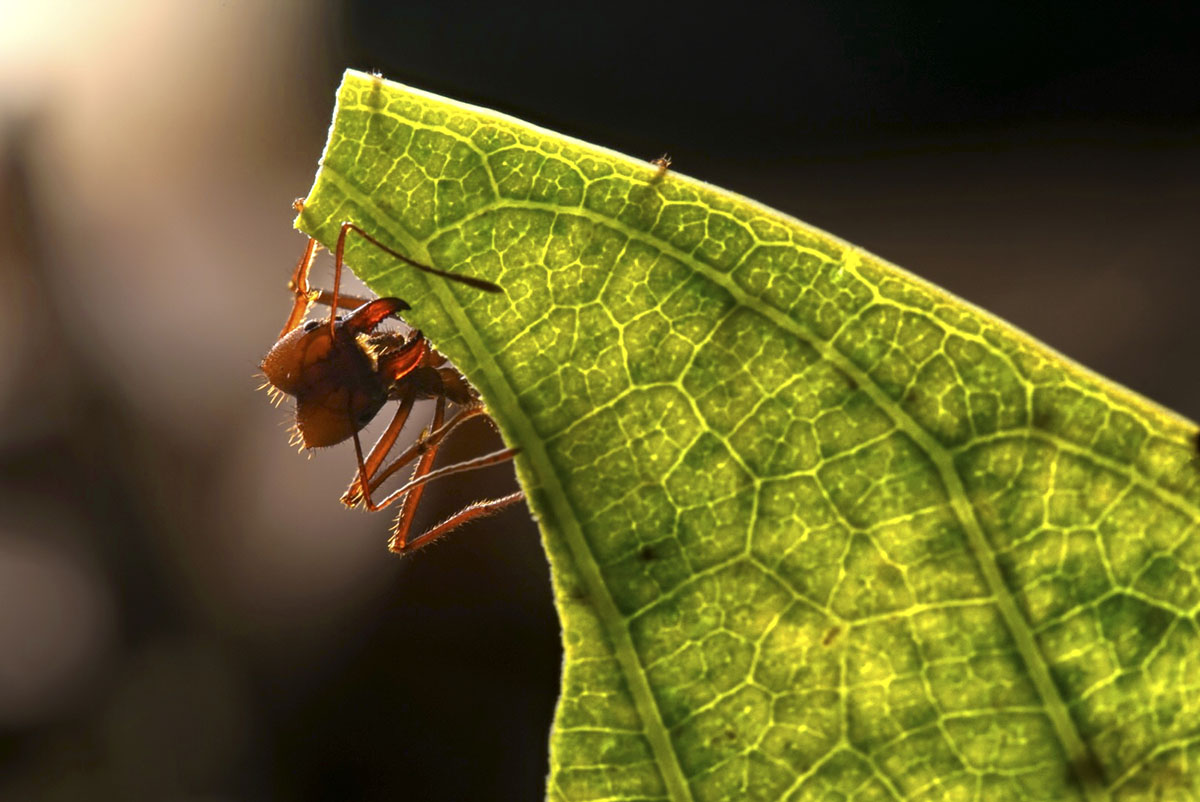
Leafcutter pismire. Photo by Paul Bertner for Rainforest Expeditions.
25. Pinkish Toe Tarantulas
Pinkish Toe Tarantulas accept a solid blackness body, simply prove some personality at their toes. A rather docile tarantula, they have pink tips on each of their eight legs. Unlike nigh tarantulas, they are active during the solar day. In addition, the pink toes help them stick out from their environment, allowing travelers a amend adventure of spotting them.
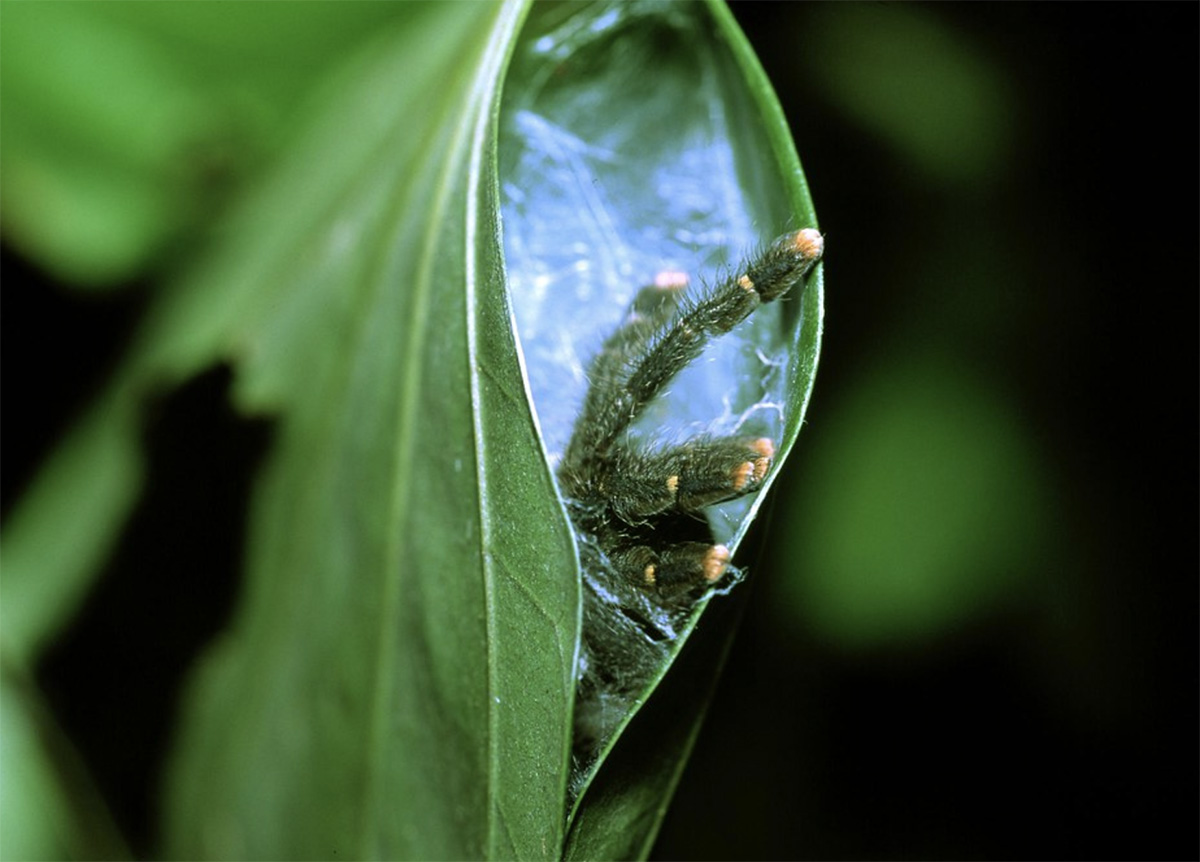
Pinkish-toe tarantula. Photo by Rainforest Expeditions.
26. Blue Morpho Butterfly
The Amazon is home to at least seven,000 species of butterflies – 35% of the earth'due south known butterfly species. Ane of the most striking collywobbles in the jungle is the blue morpho. With bright blue wings, you cannot miss them fluttering around the rainforest.
27. Urodid Moth Cocoon
The intricate design of this lattice cocoon was weaved with care by an urodid moth. This cocoon has an open construction, allowing air to period over the pupa, preventing the growth of mold and fungus. The pupa will remain in its cocoon until it is full grown and and then makes its jungle entry through the tubular escape hatch at the bottom.

Urodid moth cocoon. By Jeff Cremer for Rainforest Expeditions.
28. Bister Phantom Butterfly
This incredible butterfly with translucent wings lives in the deep, well-shaded parts of the jungle. It earned its name from the amber accents on their wings and from being semi transparent, like a phantom or ghost.
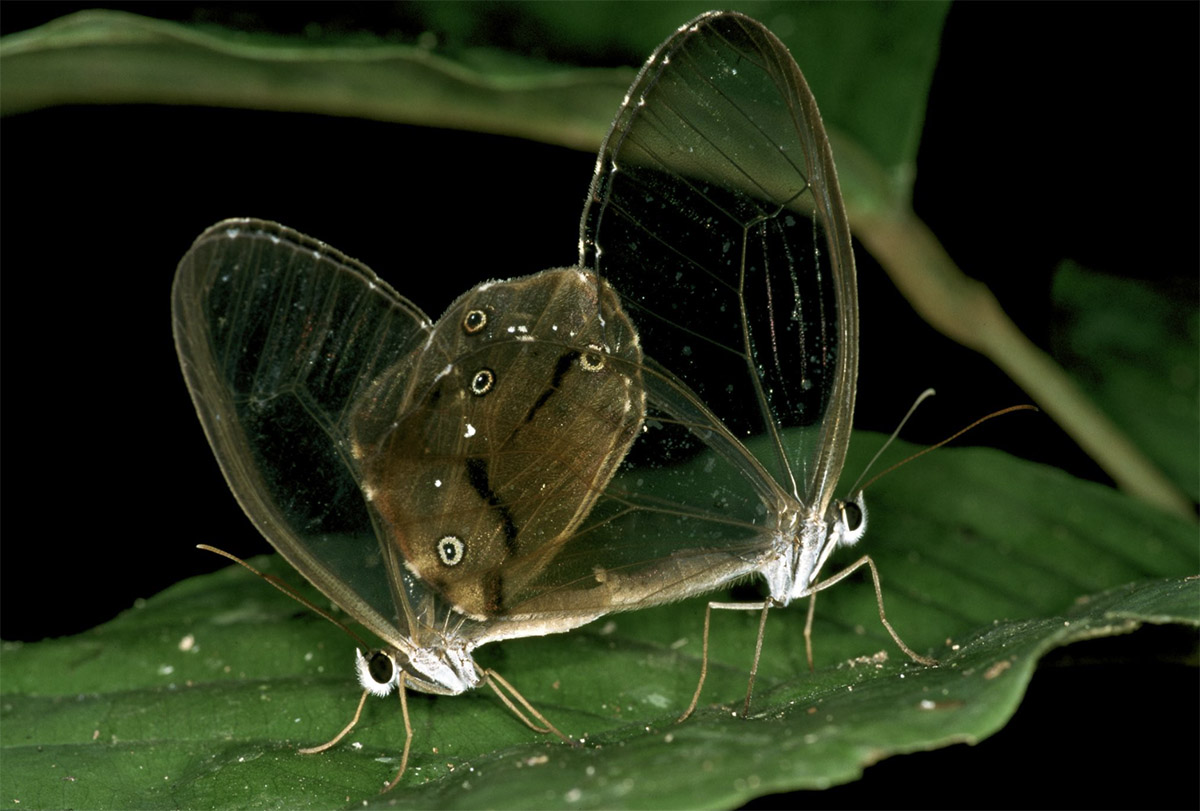
Two bister phantom butterflies. Photo by Rainforest Expeditions.
29. Brazilian Wandering Spider
This spider has the almost toxic spider venom in the world. The Brazilian wandering spider lives not but in the Brazilian Amazon, only in sure areas across Due south America. This spider earned its proper noun as it actively searches for casualty. It wanders, compared to other spiders that build and wait in a spider web. This long-legged spider has a brown body and crimson fangs.

Brazilian wandering spider. Photo past Rainforest Expeditions.
30. Scorpions
While scorpions are often thought of equally desert dwellers, the Amazon Rainforest is too home to several species. Afterwards scrolling through the previous Amazon Rainforest brute photos, you probably thought you had just almost seen it all. Then yous acquire that scorpions glow under blacklight! Under the beam of an ultraviolet light, scorpions glow a neon blueish, lighting upwards like beacons in the night.

Scorpion in the Amazon. Photo by Paul Bertner for Rainforest Expeditions.
The Amazon has it all: from cute and fuzzy to downright bizarre. The Amazon jungle is definitely a melting pot of animals with their own sense of mode. Want to encounter these incredible Amazon Rainforest animals for yourself? Learn more than about planning your own trip to the Amazon and conversation with a travel good at present.

Britt is a California native who now calls Republic of peru domicile. She is a traveler with a passion for all things outdoors, scuba diving, and capturing memories with her camera.
Source: https://www.peruforless.com/blog/amazon-rainforest-animals/
Posted by: greenfieldbutivene.blogspot.com

0 Response to "How Many Animals Are In The Amazon Rainforest"
Post a Comment